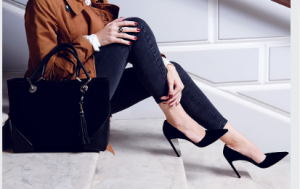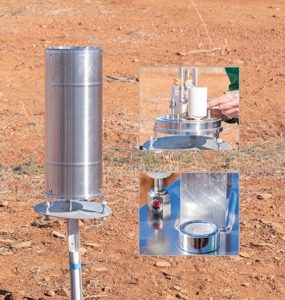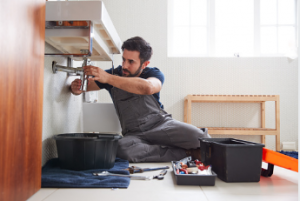Luckily, some ways to make wearing high heels more comfortable include silicone inserts, Moleskin, or Non-slip pads. You can also tape your third and fourth toes together. It will make your feet stay in place and redistribute weight to the heels and balls of your foot, which will make them more comfortable to wear. However, if you’re unsure what to do, follow these tips to make high heels more comfortable.
 Moleskin
Moleskin
If you’re tired of blisters and sore feet after wearing high heels, consider using moleskin. Place it inside the shoe before wearing it to protect the skin underneath. You can also place a piece inside the shoe’s seam to avoid friction. In addition, putting the insole inside your shoe will make it more comfortable and help keep your feet dry. You can also try putting heel grips inside the shoes to avoid rubbing the area. See the collections of Spendless – AU.
Moleskine works well to protect your feet from the friction caused by high heels. It can also be placed around the blister. You can use a single layer, but you should apply two or three layers if the blister is deep. The layer of moleskin should be higher than the blister, as this will help absorb friction and prevent it from coming back. Moleskine can help you avoid blisters and make wearing high heels more comfortable.
Silicone inserts
You can use shock-absorbing gel pads in shoes to make them more comfortable. These gel inserts are designed to be worn above or beneath the insoles. They’re non-adhesive, so you can take them off and reposition them anytime without replacing them. They also prevent the foot from slipping forward. For example, silicone inserts make wearing high heels more comfortable by redistributing the weight and preventing it from slipping. See the collections of Spendless – AU.
Non-slip pads
If you love high heels but are uncomfortable with the pressure they put on your feet, consider purchasing a pair of non-slip insoles. These inserts absorb shock and vibration from your feet. They are made of moisture-wicking suede fabric and gel-based cushioning, and these inserts can be re-used. They are made for men and women and work well in athletic shoes or boots. The pads also have a textured design that keeps them from slipping.
If you want to wear high heels more often, consider purchasing an insert to add additional traction to your shoes. Some types are designed to work with open-toed shoes, while others are meant for all types of shoes. While non-slip inserts don’t have an adhesive backing, you can purchase double-sided tape to secure them. These inserts are also removable, so you can wear them or remove them as you please.
Taping your third and fourth toes together
For those who find that high heels are making their feet feel uncomfortable, taping your third and fourth toes together can help ease the pain. Putting the tape on the toes can help block the nerve that causes discomfort while wearing high heels. This method works well with closed-toed shoes. It is not permanent and can be removed as soon as you stop wearing them.
Another solution is to apply gel cushions in the toe area. There are gel cushions available that work well with high heels and sandals and can be washed after use. Likewise, some people have reported that taping their third and fourth toes together makes high-heeled shoes more comfortable. To tape the toes together, you should count from your big toe.
Proper posture
High heels can be painful for your joints, hips and back, so you must maintain good posture while wearing them. Roll your shoulders back and ensure your head and heels are parallel with your spine. Try to keep your shoulders back and engage your ab muscles. Practice wearing high heels for at least one day before you take them out in public. Also, learn how to insert insoles inside your high heels.

 If you’re planning to install a rain gauge, you’ll need to know where to place it to get an accurate reading. A 203-mm rain gauge is circular and collects the rain into a graduated cylinder. Its top should be placed at 0.3 meters above ground level. Avoid placing the gauge in a corner where it may face high traffic or near a building or tree. Instead, place it in a bucket, container, or hole. Then, place it in a safe, dry area, and measure the rain daily.
If you’re planning to install a rain gauge, you’ll need to know where to place it to get an accurate reading. A 203-mm rain gauge is circular and collects the rain into a graduated cylinder. Its top should be placed at 0.3 meters above ground level. Avoid placing the gauge in a corner where it may face high traffic or near a building or tree. Instead, place it in a bucket, container, or hole. Then, place it in a safe, dry area, and measure the rain daily. When looking for a family lawyer Adelaide, you need to be confident that you are choosing a legal professional with experience in these matters. Di Rosa Lawyers offers top-tier legal services in South Australia, and their Adelaide office is located in the Adelaide area. In addition, they have several other locations in the 5000 postcode area. If you’re unsure which law firm you should choose, start by reading reviews of their services.
When looking for a family lawyer Adelaide, you need to be confident that you are choosing a legal professional with experience in these matters. Di Rosa Lawyers offers top-tier legal services in South Australia, and their Adelaide office is located in the Adelaide area. In addition, they have several other locations in the 5000 postcode area. If you’re unsure which law firm you should choose, start by reading reviews of their services. Water supply
Water supply